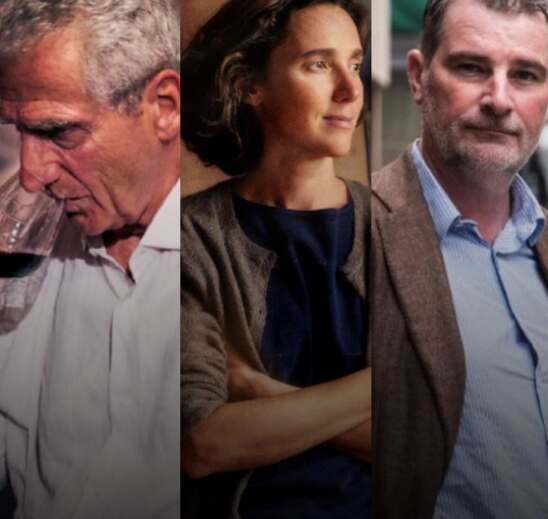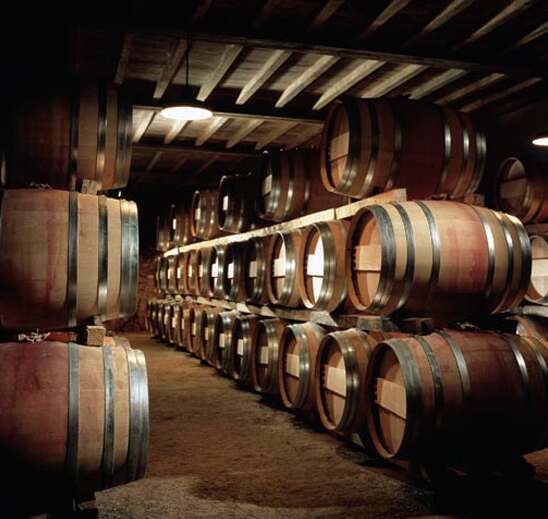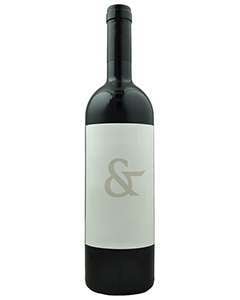Tertre Roteboeuf
One of Saint-Émilion’s greatest vineyards, Tertre Roteboeuf is an extensive six hectare amphitheatre of vines planted on cool, clay-limestone soils.
History
Château Tertre-Rôteboeuf is an extraordinary domaine, boasting a lengthy history, an exceptional present and a hugely exciting future.

Tertre-Rôteboeuf lies 2km south-east of Saint-Émilion on a very special, peninsular extension of the slope which houses Châteaux Pavie and Larcis-Ducasse. This extends to a hillock, the hauts de côte, with the slopes beneath, pleines côtes, which emcompasses the lieu dit Rôteboeuf. A mere 6 hectares in size, the rise to fame of Tertre Rôteboeuf, from relative obscurity, has been dramatic. Even without a grand cru classé title, it is one of Saint-Émilion’s cult wines. This turnaround has been spearheaded by a unique individual, François Mitjavile, aided and abetted by his wife Miloute and, increasingly, his son and daughter Louis and Nina.
At the time of their marriage in the early seventies, François was working for his family company in Paris while Miloute was working for the acclaimed photographic agency, Viva. The newlyweds had the good fortune of having a regular escape route from the buzz of Parisian life from time to time – visiting Miloute’s cousin in Bordeaux at Château Bellefond-Bercier, along with her father who also resided in the Saint-Émilion region until his death in 1961. During this period, Le Tertre was owned by Miloute’s father who rented it out to the cousins and its vineyard's production was vinified with their wine.
When listening to François, it is clear he is a hugely intelligent individual with a rich vocabulary who, despite trying to become a corporate man in Paris, is not one for conformity. So, ignoring some boring little practical details, François and Miloute elected to take on Le Tertre vineyard and leave their city lifestyle behind. At this point, they knew nothing about viticulture or vinification, money was scarce and there was no cellar, winemaking paraphernalia or even barrels at the property – minor inconveniences. Their new venture began with a lengthy two-year stage at Château Figeac where François learnt the practical side of the vineyard and cellar. Château Le Tertre was then returned to family control after the 1977 vintage.
To the casual observer, the Bordelais, who are fiercely proud of their identity, exercise an almost cussed lack of imagination when it comes to property names, resulting in a confusing array of wines bearing the same title, regardless of appellation or quality – further confusion for the hapless consumer. Wisely, François and Miloute decided to differentiate themselves from the other Tertres by adding Rôteboeuf (literally translating as belching ox) to the name, alluding to the cattle which used to graze the land. This addition also reflects the different slopes of the property – Rôteboeuf for the lower slopes and Tertre for those higher up, surrounding the house and garden. Finally, Château Le Tertre-Rôteboeuf was en route. There was a name, a vineyard, a base of experience on which to build and a potentially lovely house, with inspirational views over the Dordogne and across to the Entre Deux Mers.
Winemaking
François completely renounces the title of winemaker seeing this as pure arrogance, though he does concede that he has the power to destroy something potentially good.
With a humility common amongst so many of our principals, he sees himself as a translator of terroir, rather than some omnipotent being on which his wines depend.
His remarks on vinification are spartan and always hark back to the quality of the grapes, which are not de-stemmed. Fermentation, in concrete, is a powerful process, lasting 3 to 4 weeks, attaining temperatures of around 35º for fruit maceration and optimum fruit expression.
Elévage takes place in a temperate, non air-conditioned cellar where the wine is oxygenated via barrels and several rackings.
François views the importance of oxygen as both dramatic and risky – while exposure to oxygen is not the ultimate goal, and is in itself dangerous, the reaction of oxygen on constituent molecules allows for the development of aromas and flavours. The super-ripe fruit responds well to this treatment, perfectly articulating terroir and vintage.
There is no second wine, a Mitjavile idiosyncrasy which he believes produces a more honest and true rendition of each year.
The wines are then matured for 22 to 24 months in very fine-grained French new oak barrels, with a medium to long toast. Fining and filtration very much depend on the vintage.
François aims to make emotive, affecting wines which stir the soul and focus on complex aromatics, rather than power.

The Vineyards

The vineyard has an average vine age of 40 years, planted with 6000-7000 vines per hectare, 80% Merlot and 20% Cabernet Franc. Both varieties are picked at optimum ripeness and, where possible, have extended hang time. François likens perfection to that state of maturity when the fruit is so ripe it is almost raisined – a goal which takes nerve to achieve. His late harvests are legendary. At Tertre-Rôteboeuf, the climate is generally maritime but with noticeable continental influences, for example, there can be periods of intensive heat.
The soil consists of very rich clay over limestone, which is very slow to warm up in spring, ensuring that the grapes will never ripen early. The exposition ultimately allows for optimum ripeness and considerable power, whilst the gradual warming of naturally cool soil acts as a counterbalance – the great paradox of Tertre Rôteboeuf! This power and elegance in equilibrium is François’ hallmark.

